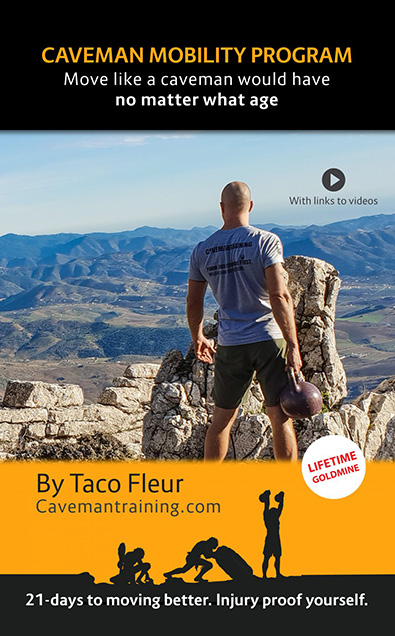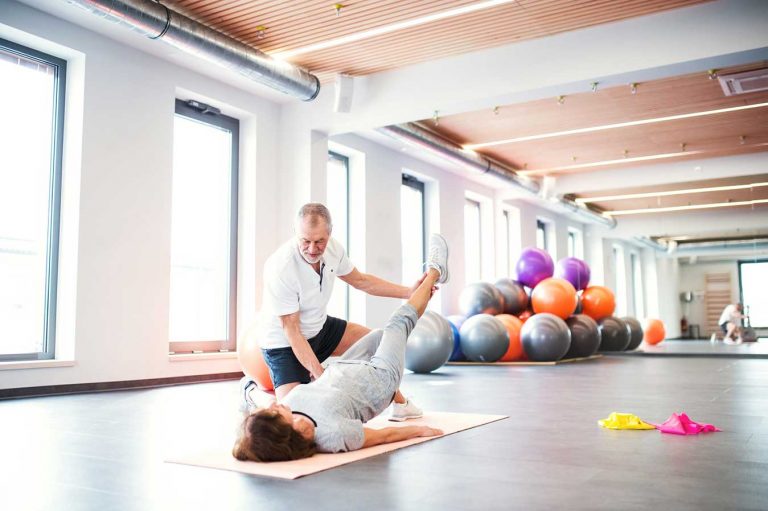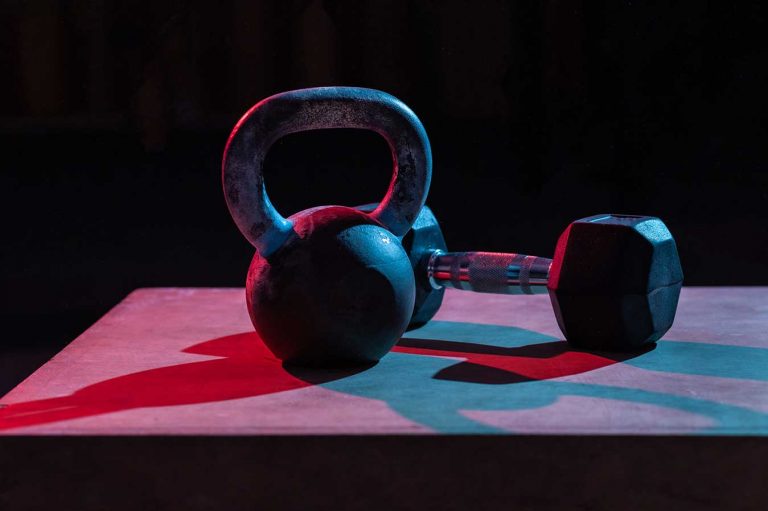The term mobile has become synonymous with portable technology and devices these days. A simple search query of this single phrase really makes clear the shift in the definition over the past decade. It’s a bit ironic, however, since the device itself moves around yet we stay fixated to it and stationary the majority of the time. Don’t get me wrong, this technology has certainly made life easier and things more convenient than ever. Unfortunately, it also does a great job of distracting us from proper self-care and maintenance.
Basic exercises like walking around to purchase goods and services are no longer necessary. Now we can get pretty much anything delivered right to our doorstep. Trust me, I’m as guilty as everyone else with the numerous Amazon packages I frequently get. Again, I’m not saying this is a bad thing. Although, as our society adjusts so should the mentality of staying in shape and keeping our bodies toned and primed. That all starts with maintaining perhaps our most essential attribute, mobility.
Why You Should Care About Mobility
It goes beyond just walking from point A to point B. The best description that I’ve come across that accurately defines mobility is explained in this video by TB12 sports:
“Mobility is a term that describes the many components of actively moving a joint through its fullest pain-free range of motion with control.”
The key takeaway points that you might not even realize are “fullest” “pain-free” and “range of motion”. I never used to associate mobility with painlessness, but when you think about it, it makes perfect sense. When we bend over to perform a task like picking something up, there shouldn’t be a sensation of aches or agitation. Furthermore, the fullest aspect shouldn’t be ignored either. For instance, can you touch your toes when bending over with your knees locked? If not, there is a good chance it’s due to mobility which CAN be improved. Of course, being overweight will also impact how difficult this test is (something I’m still working on).
Now that you have a better understanding of what mobility is and its importance, let’s cover some of the issues you may encounter when it’s neglected. Some of these may even surprise you. However, if you chose to work on your mobility, you don’t have to live with any of them.
Back Pain

Most of my workday is spent sitting down in a chair in front of a computer. I’m sure that isn’t all too uncommon across the globe given the wide range of office and administration jobs. Unless you have a job in labor, the majority of your workday might be spent being immobile. This lack of movement puts a strain on your muscles causing them to stiffen and tighten up. Eventually, at some point, you’ll surely experience back pain.
In one of my articles, I detailed how kettlebell exercises can actually help alleviate back pain. In particular, the kettlebell swing which simulates the natural movement and mechanics of the spine when compared to other common laborious tasks. It’s a great way to work all of those lower back muscles (and many more) in a short duration.
The truth of the matter is, you can work those muscles effectively without the need for a kettlebell. There are many different hip mobility exercises to ease lower back pain. Just spending a little time each day performing them will go a long way to remedy nagging back pain.
Bad Posture

This goes hand in hand with back pain, wouldn’t you think? Slumping, slouching, and hunching are just a few common posture mistakes that we typically make. Although, I’m guessing you already knew this.
Must you completely eliminate bad posture to sustain maximum mobility? I think that’s a little unrealistic. However, you should seriously limit and monitor how often you’re doing this. Much like sweets and junk food, a little here and there in moderation isn’t going to affect you that much. Just don’t make it a habit.
Recently a study by physiotherapists at the University Hospital of North Tees in Durham claimed that slump-sitting isn’t so bad for you after all. This lead to some online publications proclaiming that slumping is actually good for you! Don’t fall for this nonsense. The gist of the study is that momentary slouching places the muscles in a relaxed state which is a good thing. Nowhere does it say that prolonged slumping or slouching is beneficial to your spine and back muscles. Again, it’s all about doing it in short and infrequent occurrences.
Bad Sleep

This is the one I had in mind when I mentioned: “surprise you”. Bad sleep can range from a plethora of sleeping disorders, so by no means is improved mobility a cure-all. However, as the National Sleep Foundation notes, pain and sleep do not go well together.
If you’re having trouble sleeping and experiencing pain unrelated to injury, mobility exercises could be the key to reducing or eliminating that pain. Proper sleep is what really determines how our mind, body, and mood will perform when waking up. Some people can function adequately on a limited amount of sleep. The rest of us? Well, we tend to get cranky and irritable which might have consequences in the workplace.
So the logic goes – regular mobility exercises will reduce or eliminate these common pains thus allowing you to get the rest you need. Simple, right? I wouldn’t have connected these dots without first doing some research but it’s hard to argue otherwise.
If you or someone you know needs to sleep in a chair due to the pain and stress caused by lying down in bed, I encourage you to have them test their mobility. It might make all the difference in the world. No one should have to sacrifice their sleep quality unnecessarily.
Shin Splints

Up until this point, the previously mentioned ailments typically affect a broad range of different people. Shin splints, or the stress on your shinbone and the connective tissues causing pain and inflammation, are more associated with runners and athletes. Of course, this condition isn’t limited to active individuals. It just goes to show that even people who are in shape can benefit from better mobility.
There are several things that can exacerbate shin splints. Flat feet (those with fallen arches) are one of the main causes which can lead to discomfort. Also, shoes that aren’t properly sized won’t provide the necessary support and running before warming up or stretching can also contribute significantly to this type of pain. Even if you follow the best advice to resolve these potential factors, you might still suffer due to weak ankles, hips, or core muscles.
Fortunately, with mobility exercises, those muscles will strengthen and become resistant to the stress put on the shinbone. There are numerous types of these exercises which when done regularly, will absolutely help condition that area of your body (among others) to allow you to run and walk pain-free. Some of these exercises you might be familiar with but others I guarantee you’re unaware of.
How You Can Improve Your Mobility
Here it comes, the pitch. If you search online, you’ll find plenty of videos of mobility exercises where you can follow along. While they can be viewed for free, what you won’t find is a detailed plan of progressing your mobility. Having structure and a way to monitor your progress is essential to successful improvement. Without it, expected results might not occur which leads to frustration and abandoning any sort of routine. It’s no different when trying a mobility program.
I believe that to fully benefit from such programs, all facets must be understood. Not just the how or the what. But also questions like why is this particular exercise effective? and where in the body do they target?. Having this knowledge will aid in setting the appropriate expectations for improvement. These are the things that you’ll rarely find included in free resources, yet might ultimately decide how far you progress.
Personally, I always like to examine the value of programs that cover all the bases. How much is it going to cost me and what am I getting in return? If I have to pay a small fee to get a better quality of life, that’s very reasonable to me. After explaining this mobility program, I hope you’ll feel the same way!
The Caveman Mobility Program
For the sake of transparency, yes, I am an affiliate of this program. That means I earn a small commission each time a sale is made. However, this site and its audience are extremely important to me. I would NEVER recommend a product or service for the sake of making cash. My primary mission with Kettlebell Krusher is to inspire and encourage others to improve themselves physically and to an extent, mentally.
The Caveman Mobility Program was created by a mentor, friend, and fellow compassionate human being, Taco Fleur. He and the rest of the team at Cavemantraining have built a following in the kettlebell community for their dedication to improving the lifestyle, health, and physique of their students. Unlike some trainers who will take your money and disappear, the Cavemantraining staff are easily accessible. Whether that’s through posting a response to your question on their many Facebook groups, sending an email, or even calling directly through their direct lines on their contact page (how many trainers do this?!), every effort is made to reply asap.
Throughout my weight loss and kettlebell journey, I’ve had the pleasure of interacting with the team and participating in several of their programs. I’ve interviewed Taco, reviewed his highly-rated training program, and discussed the tremendous impact he’s had on my progression with kettlebell exercises on many of this website’s posts. I have yet to discover another trainer who is as thorough and detailed as he with the programs they’ve created.
What to Expect in the Program
Below is an example of the what that you can expect in the Caveman Mobility Program. The video shows all of the movements that are contained in that program.
As you can see, there is no shortage of exercises targeting various areas of the body. However, this program goes beyond just demonstrations. What you’ll get is instant access to an Ebook / PDF (some 250 pages) that will serve as a guide to improving your mobility. It’s designed to not only minimize or eliminate the ailments I covered earlier but to keep you focused and motivated to reach those results.
Not only do you get these exercises in detail with video links, but also included is a 21-day program you can follow and even some bonus workouts. Beginning and continuing through the program, a chart is used to gauge your current mobility status and progress. So instead of the here’s what I’m doing, follow along recipe that you see so often in other training material, the idea is here’s where you’re at, what to do, why you should do it, the muscles worked, you got this!. You get the encouragement, motivation, and structure in the book but also the support, should you need it, through the many contact channels available via the Cavemantraining website and communities.
So if you want to save money that would cost hundreds or thousands of dollars that a mobility therapist, mobility specialist, or mobility rehab would charge, click here to purchase this program. It’s a one-time purchase of $24.95 and will pay for itself in what you get out of it tenfold. The cover photo below will also take you directly to buy the program. Start moving and feeling better today!




